(13662 products available)















































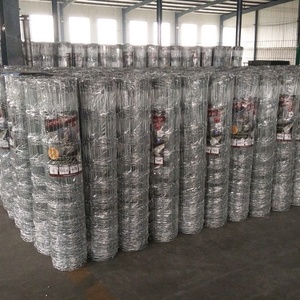














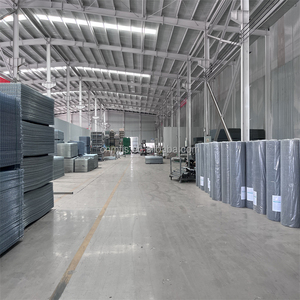

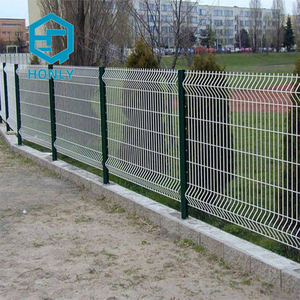


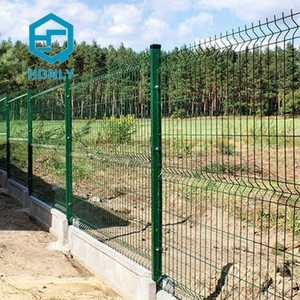
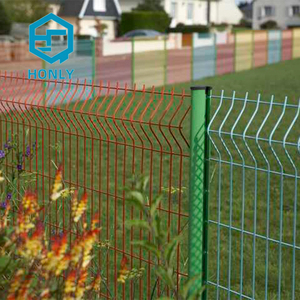
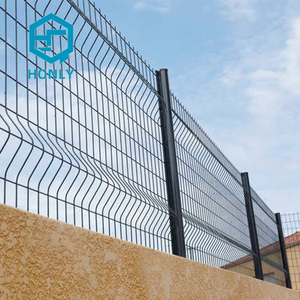




















































































































































The wire mesh fence design is a popular perimeter fencing solution known for its durability, visibility, and flexibility. It's commonly used in various environments, including residential, commercial, and industrial applications. Wire mesh fences are available in multiple styles, which include welded wire fence design, woven wire mesh fence, chain-link fence, expanded metal fence, and wire fence with other fencing materials. These fences have varying features and benefits, making them suitable for diverse needs.
Chicken wire fence design fences are made by welding individual wires together at their intersections. They are solid and have a clean look, making them suitable for areas requiring both security and visibility. Woven wire mesh fences are made by weaving wires together to create a mesh pattern. They are flexible and can adapt to the terrain, making them suitable for enclosing large areas.
Chain-link fences consist of a woven mesh of interlocking wires. They are cost-effective and provide good security, making them a popular choice for many applications. Expanded metal fences are made by cutting and stretching a metal sheet to create a diamond-shaped pattern. They are stronger than some other mesh types and offer good visibility. Wire fences can be combined with other materials such as wood or metal posts to enhance the fence's strength and aesthetics.
Each type of wire mesh fence has its unique features and benefits, making it suitable for different applications. When selecting a wire mesh fence, one should consider the specific requirements of the project, such as security level, desired visibility, aesthetics, and budget. Proper installation and maintenance are crucial to ensure the wire mesh fence can serve its purpose well over a long period.
Wire mesh fences are widely used in various places to provide security, safety, etc. Different types of wire mesh designs have different characteristics to suit various needs. Here are some common types of wire mesh fence designs.
This wire mesh fence design is made by welding vertical and horizontal wires together to form a rigid grid. The welded wire mesh fence is strong and has a flat surface, so it looks neat. It is suitable for places that need safety and visibility, like airports, factories, and schools.
This fence is made by weaving wires together to create a mesh. It is flexible and can adapt to the terrain. This makes it great for enclosing farmlands or hilly areas. The woven wires also have high tensile strength, making them last long.
The chain-link fence is made by weaving interlocking wires. It is affordable and offers good visibility. People often use it for houses, sports fields, or construction sites. It is easy to install and can be customized in various heights and gauges.
This type of fence is made by cutting and expanding a metal sheet. It creates a diamond-shaped pattern. The expanded metal fence is strong and durable. It has good visibility and is fire-resistant. It is suitable for places where solid security is needed.
The wire fence can be combined with other materials, like wood or metal posts. This enhances the fence's strength and appearance. The combination makes the fence more secure and long-lasting.
The wire mesh fence design is characterized by its structure and components. These are as follows:
The wire mesh fence is composed of a steel or galvanized wire mesh that is woven into a fence structure. The wires are interwoven in a crisscross pattern to form a mesh with uniform gaps. The mesh is then attached to fence posts and other structural elements using fasteners. The fence can have one or more layers of mesh, depending on the desired height and level of security. The mesh may also include a top railing for additional support and aesthetics. The design of the mesh enables the fence to be strong and durable while also allowing for air circulation and visibility.
The primary component of a wire mesh fence is the wire mesh itself, which acts as a barrier and provides structural integrity. Fence posts are vertical structures that support the mesh and keep it upright. They are typically made of metal and anchored into the ground. Gates are openings in the wire mesh fence that allow people and vehicles to pass through. They are usually made of a stronger material than the mesh and have hinges and latches. Fasteners, such as ties, clips, and bolts, are used to attach the mesh to the fence posts and other components. They ensure that the fence is secure and stable. The top rail is a horizontal bar at the top of the fence that adds strength and can also be used for decorative purposes.
There are so many different scenarios for wire mesh fence designs. These are some possible scenarios where wire mesh fence design can be used as solutions.
Wire mesh fences are commonly used in commercial properties. They are used to protect the property, improve security, and promote a professional outlook. They can be used to protect business property, separate areas in a warehouse, or create a secure perimeter around an office building. These fences are strong and durable, so they can withstand heavy use.
Residential areas use wire mesh fences for various purposes. They can be used to demarcate property lines, secure swimming pools, and keep pets within the property. The fences are easy to install and maintain and provide the needed security.
Wire mesh fences are commonly used for roads and highways. They are used as road dividers and to prevent animals and people from entering the road. The fences improve road safety and reduce accidents.
Wire mesh fences are used in urban and rural areas to protect landscapes and ecologically sensitive areas. They can be used to protect wetlands, plantations, and other areas, thereby protecting the environment and promoting biodiversity.
Wire mesh fences are used in playgrounds and recreational areas to ensure the safety of children and other users. They are used to prevent children from wandering off and to prevent accidents. The fences are designed to be safe and secure.
Wire mesh fences are used in agriculture to protect crops and farm animals. They are used to prevent animals from entering farms and to protect crops. The fences are durable and can withstand harsh weather conditions.
Wire mesh fences can be used in historical sites to ensure that the site is protected from damage and unwanted visitors. The fences can be designed to blend in with the site and provide the needed protection. They can help prevent vandalism and theft.
Wire mesh fences are used on defense and military installations. They provide the needed security and are used to demarcate the area. The fences are strong and durable and can be used to protect sensitive areas.
Wire mesh fences are commonly used in industrial applications. They can be used as guardrails, machine enclosures, and safety barriers. The fences are strong and can withstand harsh industrial conditions.
When choosing a wire mesh fence design, it is crucial to consider the following aspects to ensure that the fence meets the requirements and complements the area's aesthetic appeal.
One of the first things to consider when choosing a wire mesh fence design is its intended purpose. Is the fence being installed for security, safety, containment, or aesthetic purposes? Different purposes require specific designs, such as a high-security fence design, which has minimal openings, a decorative fence design, which has ornamental elements, a wildlife fence design, which has graduated mesh sizes to keep animals in or out, or an anti-climb fence design, which has angled or rolled stoppers at the top to prevent intruders from climbing over. The key is to prioritize the function of the fence and choose a design that serves that purpose optimally.
The site of the fence and the surrounding environment should be considered when selecting a design. For example, a wire mesh fence design for a residential area may differ from a farm fence design. One should ensure that the fence will blend in well with the existing structures and landscape and not create an eyesore. Consider the color, texture, and style of the fence to ensure it complements the area's look.
Wire fences are usually made from materials such as steel, aluminum, or vinyl. Select a material that is durable, weather-resistant, and requires low maintenance. The choice of material should be based on the expected lifespan of the fence and the local weather conditions.
It is essential to consider the ease of installing and maintaining the fence. Some designs may be more complex to install and require professional help, while others are more DIY-friendly. Check the long-term maintenance requirements, including periodic inspections, cleaning, and repairs, to ensure the fence stays in good condition over the years.
Q1: What are the benefits of choosing a double wire mesh fence?
A1: Double wire mesh fences have a robust and durable design, with an additional horizontal wire providing extra strength. These fences are ideal for areas with high impact and traffic and where long-term security is needed.
Q2: How can a wire mesh fence design be customized to meet specific needs?
A2: Some customization options include adjusting mesh size, selecting different wire gauges, and incorporating special features like an anti-climb top or a privacy screen.
Q3: What factors should be considered when selecting a wire mesh fence design?
A3: Consider the intended purpose, the level of security required, the environment where it will be installed, and any specific regulatory or aesthetic requirements.
Q4: What is the importance of wire mesh gate design in a wire mesh fence system?
A4: Gates are critical access points that must be secure, functional, and compatible with the overall fence design. Choose gates that match the rest of the fence and meet specific operational needs.
Q5: How is the quality of a wire mesh fence assessed?
A5: Inspect the quality of the fence by considering the material used, manufacturing standards, coating quality, and any relevant certifications.